 Weird Stuff
Weird Stuff  Weird Stuff
Weird Stuff  Mysteries
Mysteries 10 Tragic Disappearances and Deaths in Joshua Tree National Park
 History
History 10 Ways Childhood Really Sucked in the Old West
 Music
Music 10 Name Origins of Famous Bands from the 1990s
 Religion
Religion 10 Biggest Turnarounds by the Catholic Church
 Weird Stuff
Weird Stuff 10 Unbelievable Times Laws Had Unintended Consequences
 Humans
Humans Ten Historic Women Who Deserve Way More Credit Than They Got
 Movies and TV
Movies and TV 10 Films That Spawned Major Lawsuits
 History
History Ten Times Towns Were Wiped Off the Face of the Earth
 Creepy
Creepy 10 of the Most Disturbingly Haunted Public Houses in the UK
 Weird Stuff
Weird Stuff 10 Niche Subcultures That Are More Popular Than You Might Think
 Mysteries
Mysteries 10 Tragic Disappearances and Deaths in Joshua Tree National Park
 History
History 10 Ways Childhood Really Sucked in the Old West
Who's Behind Listverse?

Jamie Frater
Head Editor
Jamie founded Listverse due to an insatiable desire to share fascinating, obscure, and bizarre facts. He has been a guest speaker on numerous national radio and television stations and is a five time published author.
More About Us Music
Music 10 Name Origins of Famous Bands from the 1990s
 Religion
Religion 10 Biggest Turnarounds by the Catholic Church
 Weird Stuff
Weird Stuff 10 Unbelievable Times Laws Had Unintended Consequences
 Humans
Humans Ten Historic Women Who Deserve Way More Credit Than They Got
 Movies and TV
Movies and TV 10 Films That Spawned Major Lawsuits
 History
History Ten Times Towns Were Wiped Off the Face of the Earth
 Creepy
Creepy 10 of the Most Disturbingly Haunted Public Houses in the UK
10 Vegetables That Have Killed Humans
We’ve always heard great things about vegetables. They tend to be low in fat and calories and high in dietary fiber and vitamins. Our parents made us finish our broccoli before we could have dessert, and opting for a salad with your meal is a much healthier choice than ordering a side of fried cheese curds.
The USDA recommends filling more than one-quarter of your plate with green goodness to maintain a healthy diet. However, not all vegetables have the squeaky-clean records suggested by their reputations. Here are 10 vegetables that have caused human deaths.
10 Zucchini
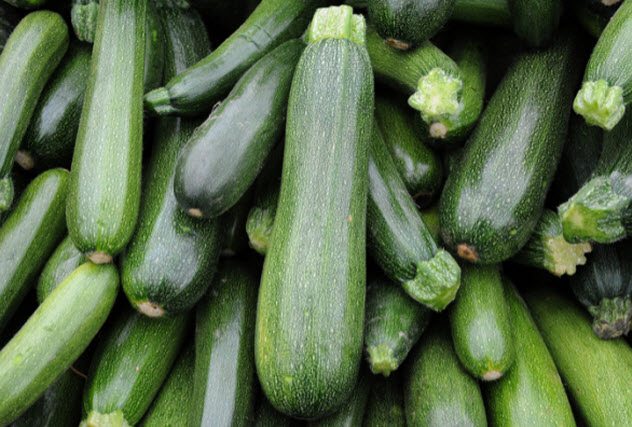
Home gardeners who grow this popular summer squash often end up with an abundance of extra zucchini, leading them to share their harvest with friends and family. In 2015, an elderly German couple received some homegrown zucchini from their neighbor. Ludwig and Inge used the squash to prepare a stew for dinner, though it ended up tasting quite bitter.
The couple fell ill that night, suffering from severe gastrointestinal symptoms. Ludwig’s face turned a sickly shade of yellow before they were both rushed to the hospital.[1]
At the hospital, Inge and Ludwig were diagnosed with severe poisoning. It resulted from cucurbitacin, a toxic substance that can occur in plants of the Cucurbitaceae family, which includes pumpkins, melons, and squash.
The bitter taste of the stew was an indicator that the toxin was present. Inge had eaten less of the stew because of the taste and was therefore able to recover. Ludwig had cleared his plate and ingested much more of the toxin, so medics were unable to save him.
9 Red Chilies
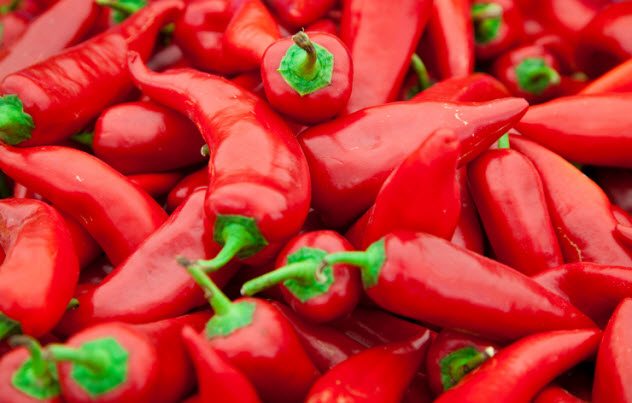
Aspiring chef Andrew Lee from Edlington, England, died after eating a large helping of red chilies. In 2008, Lee challenged his girlfriend’s brother to see who could stand to eat the spiciest sauce. Lee prepared a tomato sauce made with red chilies grown in his father’s garden. It seems that Lee should have won the contest because he downed an entire plateful of the peppery concoction. But his victory came at a cost.
That night, Lee complained of intense discomfort and itching before falling asleep. The following morning, he was discovered lying unresponsive on the floor. It appeared that he had suffered a heart attack. When paramedics were unable to revive him, he was pronounced dead at the scene.
Lee, who worked as a forklift driver, had recently passed a medical examination at work and was in perfect health before the incident. The postmortem showed that he had no preexisting heart problems.[2]
Scientists suspect that Lee had an overwhelming allergic reaction based on the itching he experienced. Even if Lee had eaten chilies before with no ill effects, ingesting such a large amount could have triggered an allergic reaction that smaller amounts did not.
Chilies contain capsaicin, an active chemical that has a range of toxic effects in high doses and has been proven to cause damage to the stomach lining in animals. Damage to Lee’s stomach lining would have exposed his bloodstream directly to the chemical, possibly prompting an allergic reaction.
A severe allergic reaction can lead to anaphylactic shock, an extremely dangerous condition that requires immediate treatment. When left untreated, anaphylactic shock can result in fatal complications, including brain damage and heart failure.
8 Spinach
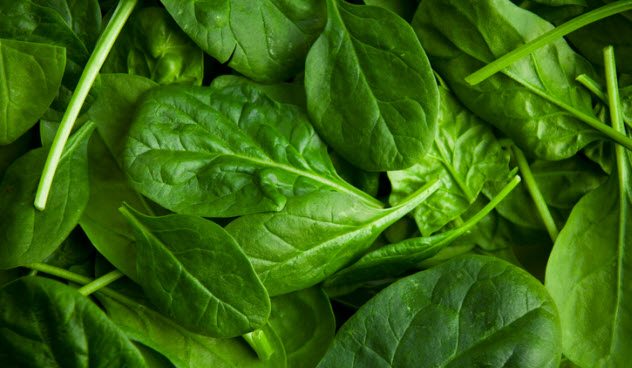
Spinach was one of the earliest superfoods of our time, way before kale or goji berries came into the spotlight. Famously the source of Popeye’s bulging muscles, spinach has long been recommended as a nutritional powerhouse. But spinach is also to blame for the deadliest foodborne disease outbreak from leafy vegetables that has ever been reported.
In 2006, an outbreak of E. coli led to almost 200 laboratory-confirmed illnesses, half of which resulted in hospitalization. Thirty-one people developed kidney failure, and at least three cases linked to the outbreak resulted in death.
Among the victims were an elderly woman from Wisconsin, a toddler from Idaho, and an elderly woman from Nebraska. A woman in Maryland also died after consuming raw spinach, but there was not enough evidence to link her death to the outbreak.[3]
The source of the outbreak was identified as fresh bagged spinach, so Popeye’s canned greens were not affected.
7 Peas
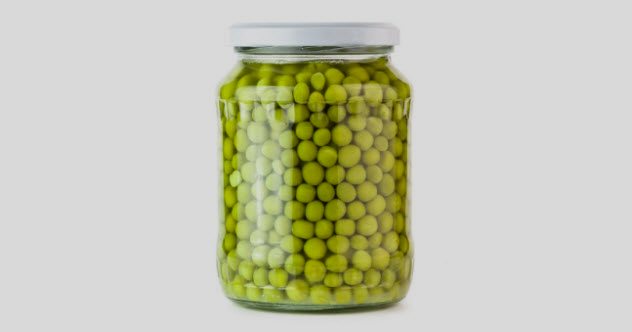
Edward and Delphine Hein hosted an annual winter dinner party for friends and family at their farmstead near Grafton, North Dakota. In 1931, they held their event on the night of January 29. Delphine served a salad sprinkled with peas that she had canned herself. Within days, 12 people fell ill and died. Edward and Delphine, as well as three of their six children, were among the victims.
Authorities determined that the deaths were caused by the home-canned peas. They were contaminated by toxins that cause botulism poisoning. Symptoms include blurry vision and difficulty swallowing or speaking. Without treatment, botulism can lead to death.
All 12 people who died shortly after the dinner party had consumed the legume-laden salad. Another guest who had removed the peas before eating the salad fell ill and died a week later, bringing the total death count to 13.[4]
The three children who survived—Richard, Marvin, and Wilfred—were too young to attend the party and spent the evening in their rooms, saving them from exposure to the fatal peas.
6 Corn
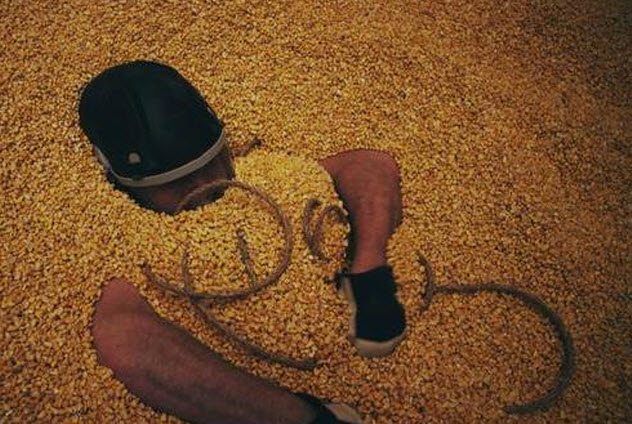
For most of us, the word “corn” brings to mind a side dish of soft, sweet kernels slathered in butter. But field corn is very different. It is left to dry completely before being harvested and is used in corn-based food products, in fuel ethanol, or as livestock feed.
After being harvested, the rock-hard kernels are often stored in grain bins, which is where things can become dangerous. Corn avalanches inside grain bins have caused numerous deaths. The most hazardous year on record for grain bin engulfments, with 26 fatalities, was 2010. More than half of grain bin incidents occur in stored corn, while the rest happen in soybeans, wheat, and other crops.
Two of the deaths in 2010 happened at a commercial grain-elevator complex in Mount Carroll, Illinois. Fourteen-year-old Wyatt Whitebread was sent into a storage tower to loosen up crusted corn kernels. When the corn inside a grain bin becomes damp, it gets coated along the sides of the interior walls. Workers are often required to walk along the top of the corn as they use a steel rod to dislodge the caked pieces from the walls.
Wyatt was inside the grain bin when another worker opened two floor holes that are designed to speed the flow of the corn. This resulted in a sudden cascade that dragged Wyatt under a mountain of kernels. He screamed as he went down, prompting 19-year-old Alejandro Pacas to rush over and try to help him. Alejandro was also engulfed by the corn, and both teenagers died within seconds.[5]
A third worker, 20-year-old Will Piper (who was Alejandro’s best friend), attempted to help and also became trapped. Luckily, Will was able to keep his head above the corn. It took nearly 12 hours for 300 rescue workers to free him.
Being buried in corn creates an enormous amount of pressure on a person’s rib cage and diaphragm, making it impossible to inhale or exhale. In addition, the kernels fill the nostrils and mouth, causing suffocation.
5 Cucumbers
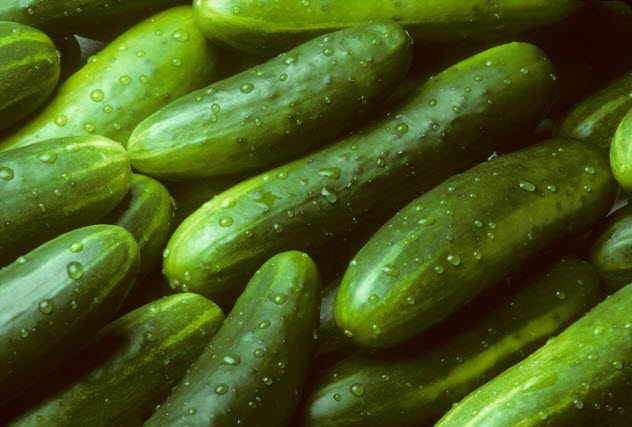 Salmonella is often associated with warnings about consuming raw or undercooked eggs and chicken. But the dangerous bacteria are not confined to poultry and poultry products. A 2015 outbreak of Salmonella in cucumbers infected a total of 907 people in 40 states across the country. Over 200 people were hospitalized, and four deaths were attributed to the outbreak.
Salmonella is often associated with warnings about consuming raw or undercooked eggs and chicken. But the dangerous bacteria are not confined to poultry and poultry products. A 2015 outbreak of Salmonella in cucumbers infected a total of 907 people in 40 states across the country. Over 200 people were hospitalized, and four deaths were attributed to the outbreak.
“Slicer” cucumbers imported from Baja, Mexico, and distributed by Andrew and Williamson Fresh Produce of San Diego, California, were identified as the source of the contamination. Andrew and Williamson supplied the tainted cucumbers to retail and wholesale companies in 22 states, which explains why the outbreak was so widespread.[6]
Salmonella is estimated to cause one million foodborne illnesses in the United States every year. People infected with Salmonella typically develop fever, diarrhea, and abdominal cramps shortly after exposure to the bacteria. Symptoms usually last four to seven days, and most people recover without treatment.
However, in severe cases of diarrhea, the Salmonella infection can spread from the intestines to the bloodstream. These cases require hospitalization and prompt treatment with antibiotics to avoid death.
4 Potatoes
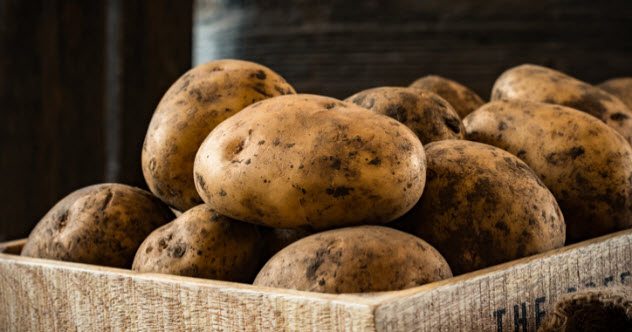
Like many members of the nightshade family, potatoes contain highly toxic alkaloids that can cause solanine poisoning when ingested. People are warned against eating any potatoes that appear green. This indicates the presence of toxins that can cause gastrointestinal symptoms ranging from moderate to severe when ingested. In some cases, solanine poisoning can result in coma or death.
But you don’t even need to eat potatoes for them to kill you.
In 2013, rotting potatoes caused the deaths of nearly an entire Russian family. A 42-year-old university professor had gone down to the basement under the garage one afternoon. When he failed to reappear, his wife went to check on him, unaware that he had fainted due to the poisonous fumes emanating from a bag of rotting potatoes. She, too, was overwhelmed by the toxic environment and never returned.
In a lethal procession, their son and his grandmother followed in their footsteps, meeting the same fate.[7] The elderly woman had grown concerned and called a neighbor for help before descending into the garage basement. By the time help arrived, all four family members had been poisoned by the toxic fumes and died, leaving an eight-year-old girl as the sole survivor.
3 Lettuce

In early 2007, an Oklahoma couple made a routine trip in their semitrailer to pick up supplies from a Dole plant in Yuma, Arizona. Sheila Kay Ross exited the truck to get some paperwork but never returned. When her husband failed to locate her on his own, he contacted police. The Yuma police searched the area but found no sign of Ross.
Three days later, her body was discovered in a trailer that was making a lettuce delivery to a Hy-Vee grocery store in Chariton, Iowa. The semitrailer had been at the same Dole plant in Yuma where Ross had gone missing. It appeared that she had become pinned inside the trailer when it was being loaded. The lettuce crushed her to death.
Authorities couldn’t determine how Ross ended up in the trailer in the first place, but the incident was ruled an accident. There were no indications of foul play by anyone or anything other than the lettuce.[8]
2 Frozen Vegetables

Make sure you pay attention to the label the next time you dig a bag of frozen peas out of the back of your freezer. Frozen vegetables produced by CRF Frozen Foods of Pasco, Washington, were identified as the likely source of a Listeria outbreak that occurred across four different states.
Although the number of people infected was much lower than other outbreaks, all nine identified cases resulted in hospitalization. Of those, one Connecticut resident died from listeriosis. Two other patients died in Maryland and Washington as well, but their deaths were not attributed to the bacterial infection.
The long-term storage of frozen foods allowed the Listeria outbreak to span over a number of years. The earliest case was reported in 2013, but recalls of the products thought to be contaminated didn’t occur until 2016. Named in the recalls were more than 350 products, including frozen green beans, broccoli, and peas that had been sold under various brands at popular grocery stores such as Safeway, Costco, and Trader Joe’s.
Listeria is much less common than Salmonella or E. coli, but it is the most lethal foodborne pathogen. A healthy immune system can typically fight off an infection from Listeria. But if the bacteria goes into the bloodstream and causes listeriosis, one in five cases results in death.[9]
1 Canned Vegetables
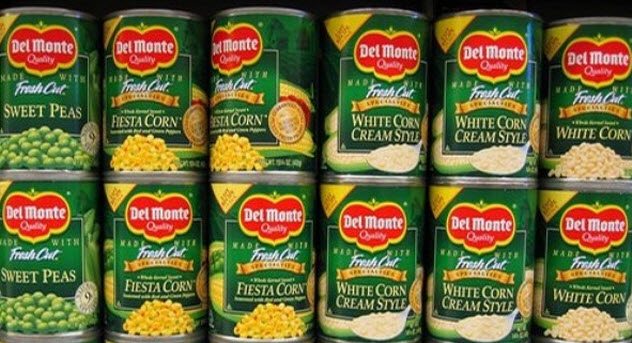
In summer 2015, Linda Clarene Jackson of Lake Los Angeles, California, was arrested for murder and faced allegations that she used canned foods as a deadly weapon. Jackson was accused of fatally beating her boyfriend, David Ruiz, with cans of peas, carrots, and chicken broth.
Police had been called on reports of a man who was injured and bleeding. They found Ruiz unresponsive, and he was pronounced dead at the scene. Authorities said Jackson’s motive was unclear.
If convicted, she faced life in prison for her canned food killing. But her sentence has already been completed. On June 8, 2017, she died of natural causes behind bars while awaiting trial.[10]
Read more potentially life-saving facts about dangerous foods on 10 Dangerous Local Foods and Top 10 Poisonous Foods We Love To Eat.








